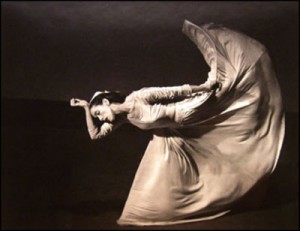Originally posted 2011-12-10 15:48:53.
 Report on the Healing Meditation… The Good, The Bad, The Interesting and the Exciting
Report on the Healing Meditation… The Good, The Bad, The Interesting and the Exciting
Four nights ago, on Tuesday, we had our first Healing Meditation session.
It was a first for all the participant, and it was a first for me.
I didn’t know what I was doing, I trusted myself to Source to tell me what to do when I was supposed to do it.
We started the way we start every meditation/connecting session: We found ourselves. Our physical bodies, our thoughts, our memories, our ego… so we can be observers to all of those.
There were seven people on the call. I felt everyone’s pain, everyone’s emotions…
I felt an overwhelming majority had pain in their left arm or shoulder.
I told each in attendance where to put their hand… I had made a pact with Source that placing the hand is directing the Light to go to that area.
I put my hand on my crotch: my hip pain originates from there.
Here is the feedback:
I got three people reporting pain in their left arm and shoulder. None of them felt it when I felt it on the call. When I visit them individually, the pain is there.
How come I felt it and they didn’t? Did the meditation cause the pain? Good question, right? After all if Source energy causes pain… who needs it, right?
The truth is this: and empath feels what’s there 100 times stronger than you do. If I feel pain in your left arm or your left shoulder, the physiological conditions for severe pain are already there, they just haven’t manifested. So sending Light to it will first aggravate the pain, so you pay attention.
The purpose of pain in the body is to be an early warning signal: you are doing something that doesn’t serve you: Stop It!
Your left hand side has an important secondary function: heart troubles will show up there, way before there is danger. If you wait until you feel the pain… it is usually too late. Especially if you are a man.
Men are less likely to feel anything, due to their upbringing, and due to being left brain dominant. It is hard to feel and think at the same time.
These were the good, and the bad. A package deal.
It’s good, because you now know. Giving yourself more light there, and changing your position, quit using the arm-rest in your car or at your desk chair usually solves your problem.
Bad if any discomfort will make you quit… but you would have quit anyway, so don’t worry about it. It is how you roll… we could say. Really it’s your machine… But if at this point you are your machine… then there is no choice.
And here is the unexpected and the exciting:
The healing meditation, used on the crotch, returns the aliveness to your neglected sexual organ and returns aliveness to you.
It is a kind of quickening I did not expect. I am 64 years old, and have given up on being a woman. A live, vibrant, functioning woman. This meditation is changing that. Wow.
I am thinking of starting a special meditation class just for the sexual awakening: many couple that stayed together for the children, find themselves distant after all these years. Wouldn’t it be great to return them to intimacy and love at this stage of the game?
I think so.
And for us, women, to be able to experience the intimacy and the soothing togetherness of a relationship would be attractive again. After all this is one of the beautiful aspects life can offer, but without an aliveness in the female region this is not attractive, even bothersome. My experience… but I think it is universal.
Awakening the sexual person within, gaining power, energy and affinity through it is good for anyone at any age. It is not demanding. It is a pulsating power force that is now allowing to participate in life in more areas and with more zest than before the awakening.
Tevye in the Fiddle of The Roof comes to mind, singing to his wife: “Do you love me?” The wife answering: “I bore five daughters for you”… Tevye: “But do you love me?” “I was and mend your clothes…” Tevye: “But do you love me?”
After this meditation Tevye’s wife would have answered “Yes” faster.
https://www.youtube.com/watch?v=h_y9F5St4j0
If you agree, disagree, hate me, love me, please let me hear from you.
PS: Martha Graham, Mother of Contemporary Dance, speaking to friend and colleague, Agnes de Mille:
“There is a vitality, a life force, an energy, a quickening that is translated through you into action, and because there is only one of you in all of time, this expression is unique. And if you block it, it will never exist through any other medium and it will be lost. The world will not have it.”
She was talking to YOU.
PPS: you need to have completed at least one connection checking webinar to be invited to the Healing Meditation class. https://training.by-sophie.com/index.php?/register/hm to register. Classes are Saturday 9 am and 9 pm for the connection class.
